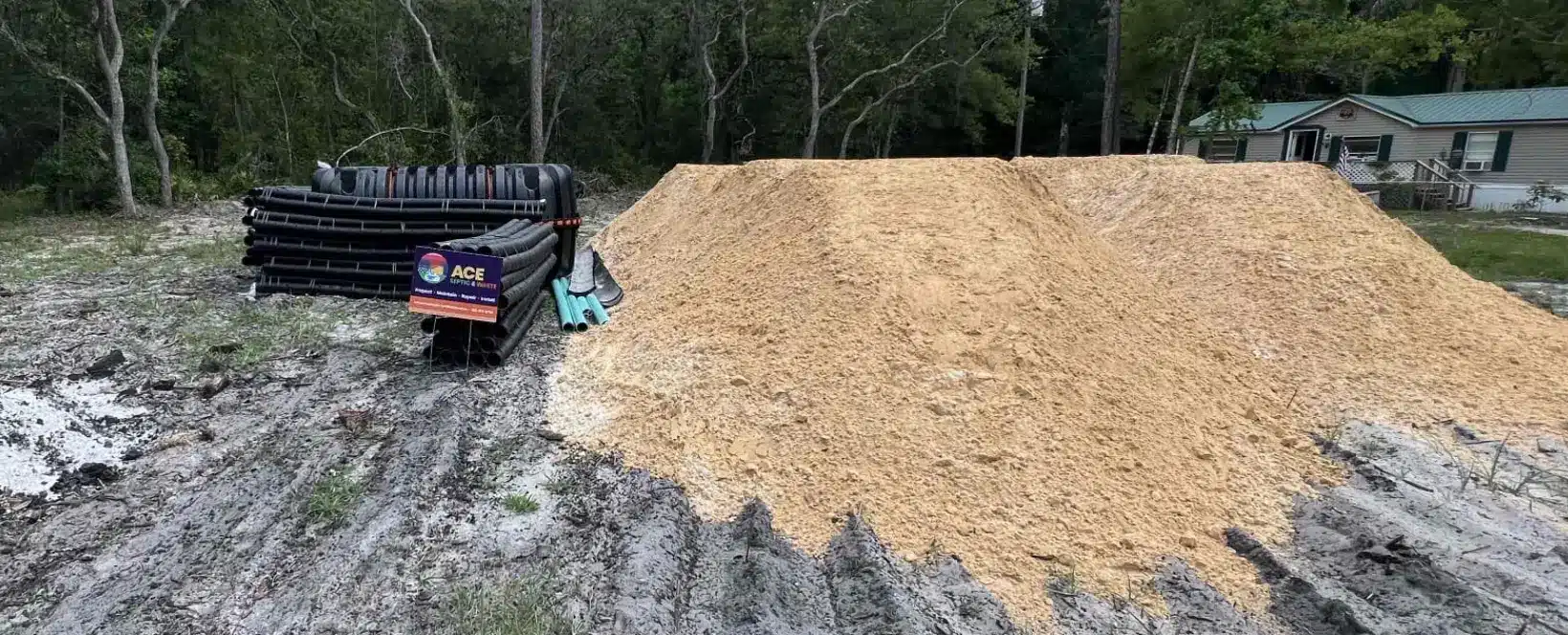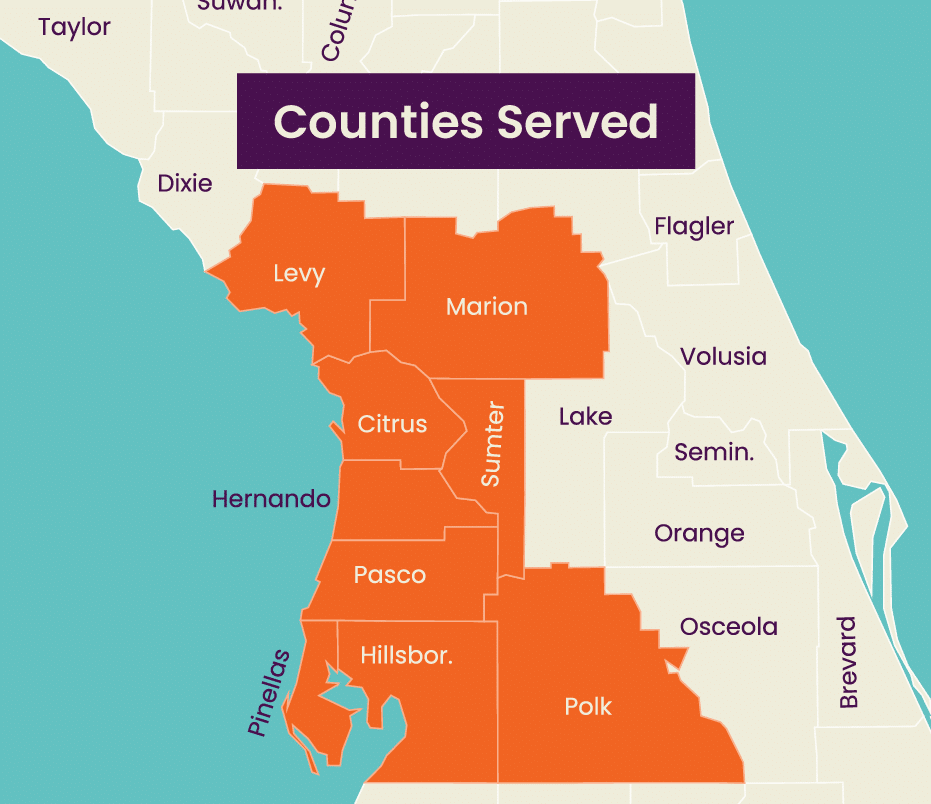When installing or maintaining a septic system, understanding the role and amount of sand required for the drainfield is crucial. At ACE Septic & Waste, we’re passionate about septic and love educating our customers on their septic or sewage systems. As part of our homeowner’s guide, this article explains why septic sand is essential, how to figure out how much sand your system uses, and how to know you have the right amount.
Understanding the Role of Sand in Drainfields
Sand in a drainfield acts as a filter and facilitates the final treatment and dispersal of effluent from your septic tank. It plays a critical role in preventing particulates from clogging the soil absorption area, which can lead to system failure. Proper sand layering ensures that wastewater is adequately treated through filtration and percolation before returning to the groundwater.
Factors Affecting Sand Requirements
Several factors determine the amount of sand needed for a drainfield:
- Soil Type: Coarse-textured soils like sand allow for quick percolation and may require less added sand, whereas clay-heavy soils, which drain poorly, might need a thicker sand layer to enhance filtration. Completing a percolation test is important in determining whether additional sand or a different type of drainfield design is necessary.
- System Size: Larger septic systems, which handle more wastewater, generally require larger drain fields and, consequently, more sand.
- Local Regulations: Most regions have specific codes that dictate the depth and type of sand used in septic systems, ensuring that all installations meet environmental and health safety standards. Regulations require that the installation of septic systems, including the placement of septic sand, must be performed or supervised by licensed and certified professionals. In Florida, septic systems have particularly strict regulations about preventing effluent from contaminating surface water and groundwater.
Calculating the Required Sand Volume
To calculate how much sand you need for your drainfield, follow these steps:
- Know the Drainfield Size: Start by determining the daily wastewater output, which typically depends on household size and water usage.
- Calculate the Area: Measure the length and width of the planned drainfield.
- Depth Requirements: Check local regulations for required sand depth, which can vary but generally ranges from 18 to 36 inches.
- Volume Calculation: Multiply the area by the depth to find the volume of sand needed in cubic feet.
Example: For a drainfield area of 600 square feet requiring a sand depth of 24 inches (2 feet), the volume would be 1,200 cubic feet (600 x 2).
Converting Volume to Practical Quantities
To purchase sand, you’ll need to convert the volume from cubic feet to cubic yards because sand is typically sold by the cubic yard. There are 27 cubic feet in a cubic yard, so using the example above, you would need approximately 44.4 cubic yards of sand (1,200 ÷ 27). Always round up to ensure you have enough material, and consider adding an extra 10-20% to account for settling and compaction.
Tips for Optimizing Sand Use in Drainfields
- Source Quality Sand: Ensure the sand meets septic system specifications for grain size and cleanliness.
- Proper Compaction: Avoid over-compacting the sand, which can reduce its efficacy as a filter and drain layer.
- Layering: Apply sand in layers, ensuring each is level and consistent to prevent channels or uneven areas that could affect performance.
Leave Septic Installations to the Professionals
While DIY projects can be rewarding, installing a drainfield is a complex task that requires professional expertise. Regulations vary widely, and mistakes can be costly. At ACE Septic & Waste, we offer professional consultation, design, and installation services to ensure your septic system is built to last and performs efficiently.
Contact ACE Septic & Waste today for more information on our services or to schedule an appointment. Let us help you build and maintain a septic system that will serve your needs for years to come.







